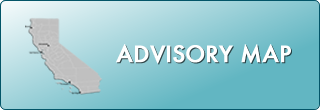Fishing in California Rivers, Streams, and Creeks? Follow the New Statewide Advisory for Safe Eating Guidelines
For Immediate Release:
Amy Gilson
(916) 764-0955
Amy.Gilson@oehha.ca.gov
SACRAMENTO – The California Environmental Protection Agency’s Office of Environmental Health Hazard Assessment (OEHHA) has issued a new statewide fish advisory that offers safe-eating advice for fish caught in California rivers, streams and creeks without site-specific advice. With the issuance of the advisory, OEHHA now offers fish consumption advice covering every water body in California.
The new advisory is based on the levels of mercury and polychlorinated biphenyls (PCBs) found in fish collected from more than 700 sites, including popular rivers frequented by anglers all over California. These include the Los Angeles, Santa Ana and Kern rivers in Southern California; the Merced River in Central California; the Owens, Truckee and East Walker rivers in Eastern California; and the Klamath, Smith, McCloud and Eel rivers in Northern California.
This is the first time that safe-eating guidelines have been provided for these rivers. The advisory is intended to be a guide for eating fish caught in these rivers, along with other rivers, streams and creeks that are not covered by a specific advisory.
OEHHA has previously issued general advisories for coastal areas, lakes and reservoirs, and fish that migrate between inland water bodies and the Pacific Ocean.
“Today’s advisory represents an important milestone. It completes our suite of statewide advisories, ensuring people fishing anywhere in California can consult safe-eating guidance,” said OEHHA Director Dr. Lauren Zeise.
“Many fish are excellent sources of protein and have nutrients that may reduce the risk of heart disease. However, like fish all over the world, California fish also have detectable levels of contaminants,” Dr. Zeise said. “By following the guidelines in our latest advisory, people who enjoy fishing along California’s rivers, creeks and streams can safely eat fish low in chemical contaminants and enjoy the well-known health benefits of fish consumption.”
When consuming fish from California rivers, streams and creeks without site-specific advice, the guidelines are as follows:
- Women ages 18 – 49 and children ages 1 – 17 should not eat black bass species, catfish species, Common Carp, Goldfish, Sacramento Pikeminnow or Sacramento Sucker. They may safely eat a maximum of two total servings per week of Red Shiner; or one total serving per week of Brown Trout, bullhead species, Rainbow Trout or sunfish species.
- Women ages 50 and older and men ages 18 and older may safely eat a maximum of five total servings per week of Red Shiner; or three total servings per week of bullhead species or Rainbow Trout; or two total servings per week of Brown Trout or sunfish species; or one total serving per week of black bass species, catfish species, Common Carp, Goldfish, Sacramento Pikeminnow or Sacramento Sucker.
One serving is an eight-ounce fish fillet, measured prior to cooking, which is roughly the size and thickness of your hand. Children should eat smaller servings. For small fish species, such as Red Shiner, several individual fish may make up a single serving.
In addition to statewide advisories, OEHHA continually develops fish advisories for specific water bodies across the state. OEHHA currently offers more than 100 site-specific advisories for lakes, reservoirs, rivers, bays and coastal areas across California. Locations are prioritized based on high contaminant levels or to alert people where it is safe to fish for consumption.
Mercury is released into the environment from mining and burning coal. It accumulates in fish in the form of methylmercury, which can damage the brain and nervous system, especially in developing children and fetuses. Because of this, OEHHA provides a separate set of recommendations specifically for children up to age 17 and women of childbearing age (18 – 49 years).
PCBs are a group of industrial chemicals. At high levels of exposure, they can cause health problems, including cancer. Although they were banned in the United States in the late 1970s, PCBs persist in the environment from spills, leaks or improper disposal. PCBs accumulate in the skin, fat and some internal organs of fish. To reduce exposure from PCB-contaminated fish, OEHHA recommends eating only the skinless fillet (meat) portion of the fish.
OEHHA’s fish advisory recommendations are based on the levels of contaminants, such as mercury, that persist in the environment and accumulate in fish. They are independent of any advisories to limit fish intake due to freshwater or estuarine harmful algal blooms (HABs). Before fishing, check the California HABs Portal to see if there are recommended HAB advisories and always practice healthy water habits.
Eating fish in amounts slightly greater than the advisory’s recommendations is not likely to cause health problems if it is done occasionally, such as eating fish caught during an annual vacation.
A poster with the safe-eating advice for fish caught in California rivers, streams and creeks without site-specific advice is available on OEHHA’s website in English and additional languages.
OEHHA’s mission is to protect and enhance the health of Californians and the environment through scientific evaluations that inform, support, and guide regulatory and other actions in the state.
###
Related Notices
Fish, Ecotoxicology and Water Section
Sacramento Office
1001 I Street
Sacramento, CA 95814
Phone: (916) 423-7572
fish@oehha.ca.gov

